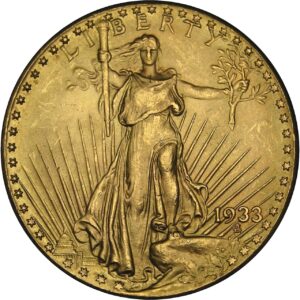Unveiling the Trillion Dollar Coin
The idea of a “trillion dollar coin” is as intriguing as it is controversial. Imagine the U.S. Mint, that venerable institution responsible for producing the nation’s coins, crafting a platinum piece with a face value of one trillion dollars1. This hypothetical coin isn’t a scheme for comic book supervillains; it’s a proposal seriously considered during debt ceiling talks.
US Mint Authority and History ↩
The Legal Loophole: A Coin to Save the Day?
Why a trillion dollar coin? Here’s the scenario: when the U.S. Government hits its debt ceiling, it technically can’t borrow any more money. However, there’s a little-known legal loophole2. The law places no limit on the face value of platinum coins the Mint can produce. So, in theory, the Mint could create a trillion dollar coin, and the Treasury could deposit it, thus creating a trillion dollars of extra cash to pay bills and keep the government running without technically increasing the debt3.
Legal Details of Coinage Act ↩

Lessons from History: Debt Ceiling Talks and Stock Market Reactions
As we embark on this exploration, it’s crucial to recall the financial market’s reactions during previous debt ceiling talks. Typically, such talks trigger uncertainty and volatility in the stock markets4. Investors, unsure of the government’s ability to service its debt or maintain fiscal stability, often respond with caution.
For instance, in the summer of 2011, a protracted debate over the debt ceiling led to the first-ever downgrade of U.S. credit rating5. The stock markets responded unfavorably; the S&P 500 index fell about 17% in a matter of weeks.
The Trillion Dollar Coin: A Solution or a Mirage?
The trillion dollar coin seems like a magic bullet, but it brings about its own set of uncertainties. Monetary policy purists argue that creating money without an equivalent increase in goods or services can lead to inflation6. This could potentially damage economic stability and market confidence more than the specter of a debt ceiling breach.
Conversely, proponents of the trillion dollar coin point out that as long as the coin is used responsibly and the additional liquidity is eventually mopped up, the risk of inflation could be managed.
Weighing the Options: The Road Ahead
The trillion dollar coin is an ingenious workaround, but it’s a one-off solution to a systemic problem. It would buy time, certainly, but the larger issue of U.S. fiscal responsibility and ongoing debates about government spending and taxation would remain unaddressed. Therefore, while we ponder on the prospect of a trillion dollar coin, it’s vital to remember that genuine, sustainable solutions necessitate robust fiscal policies and bipartisan cooperation.
Adam Faust, Principal
Deep Blue Financial LLC, Northbrook IL
